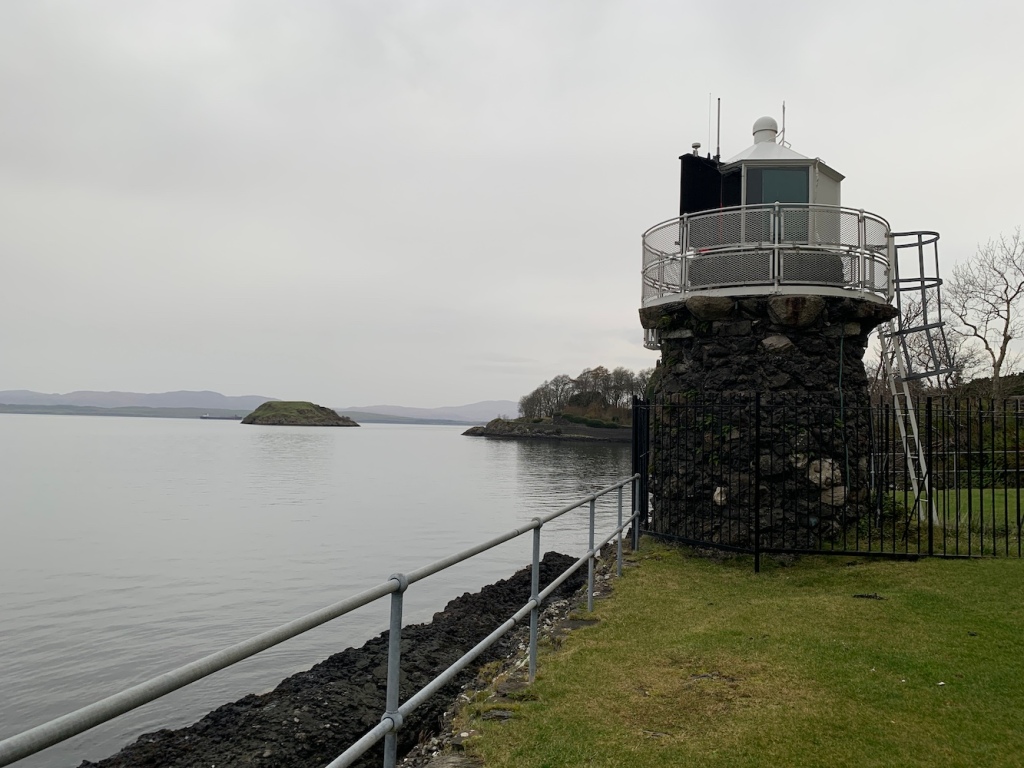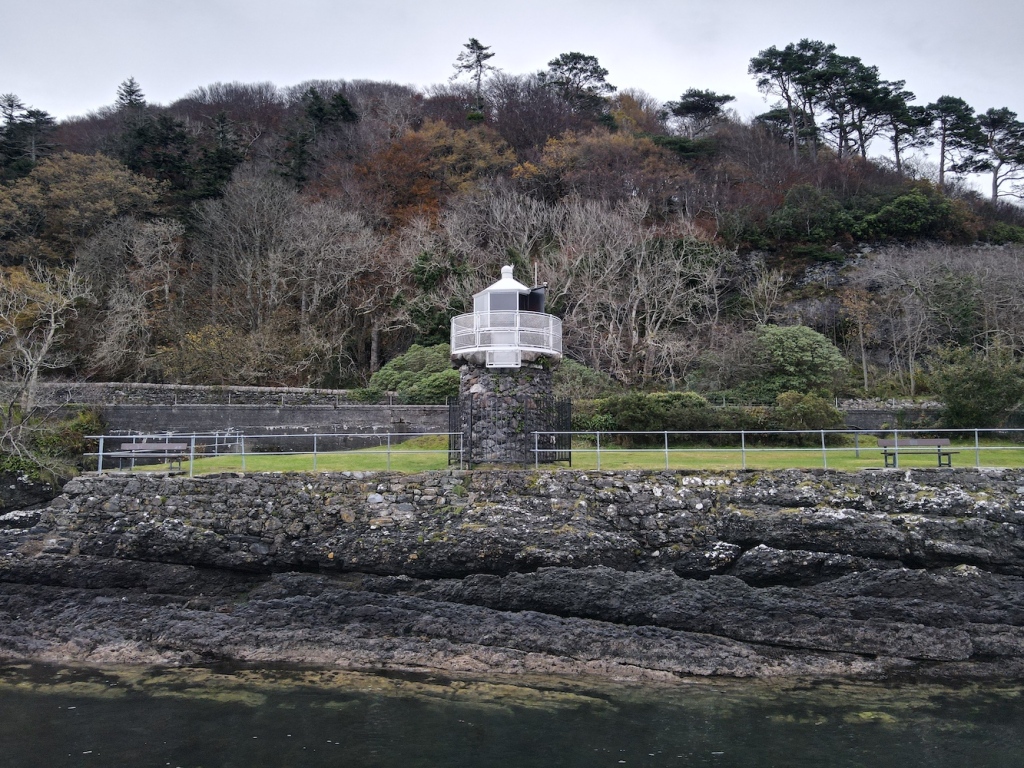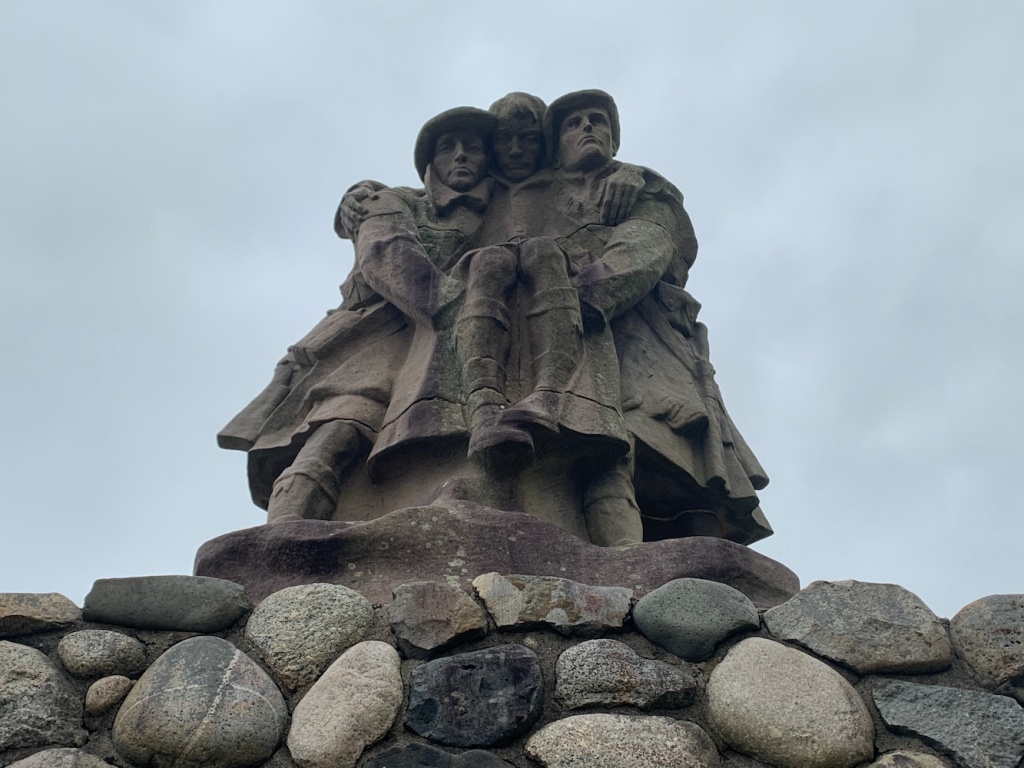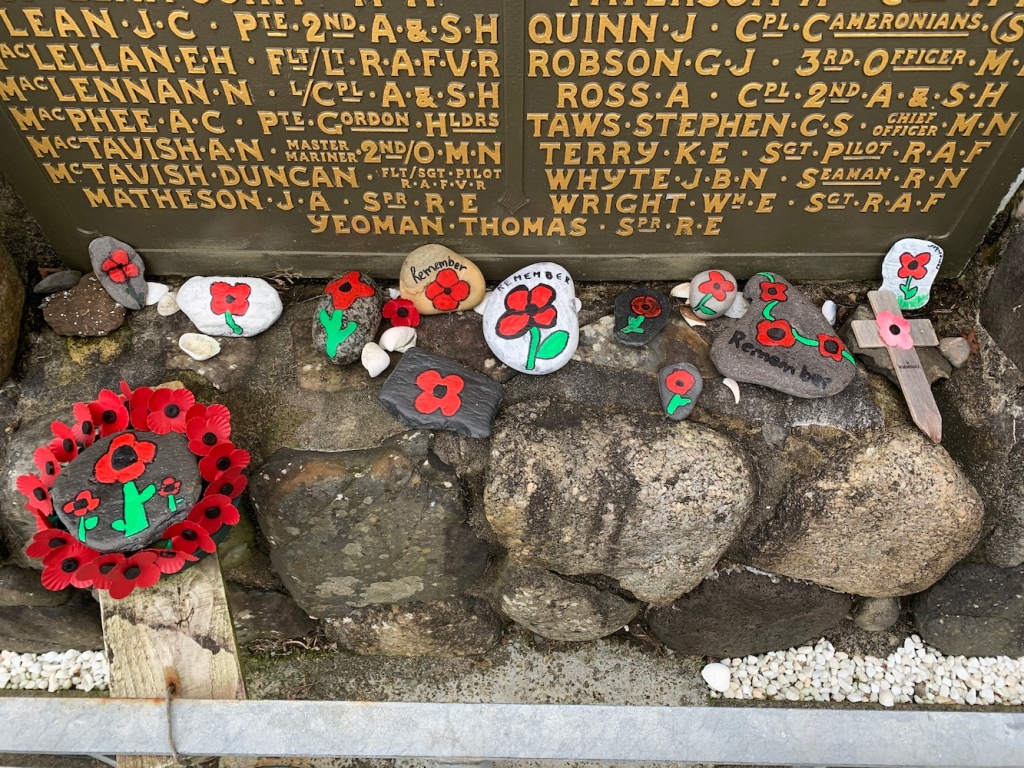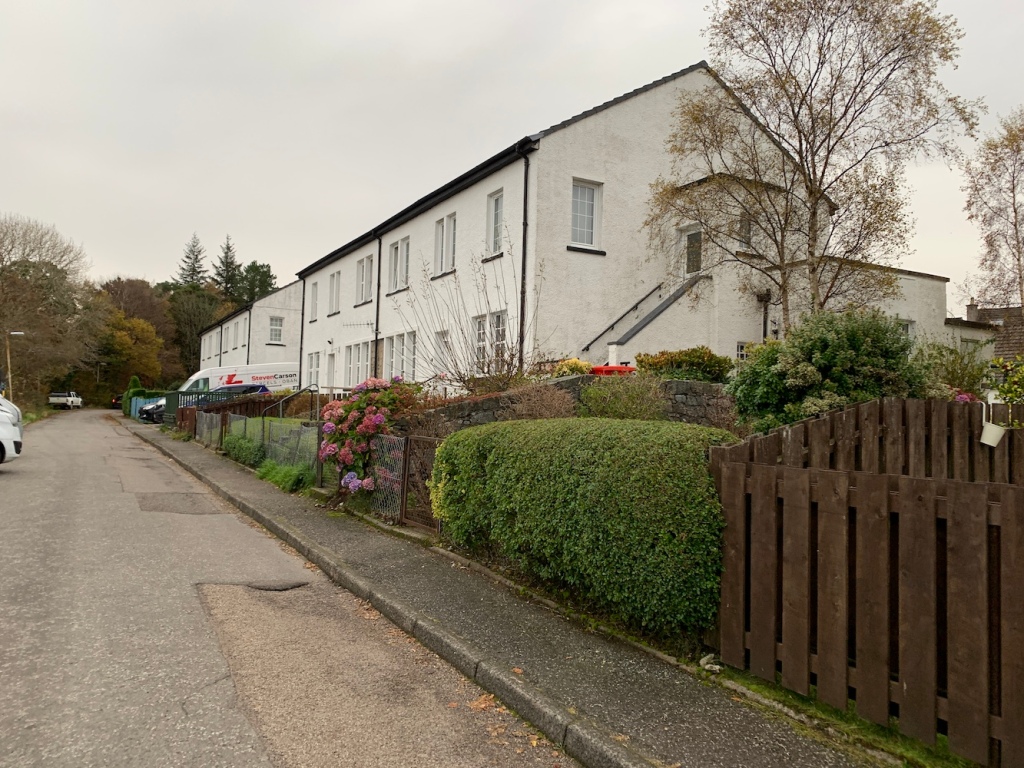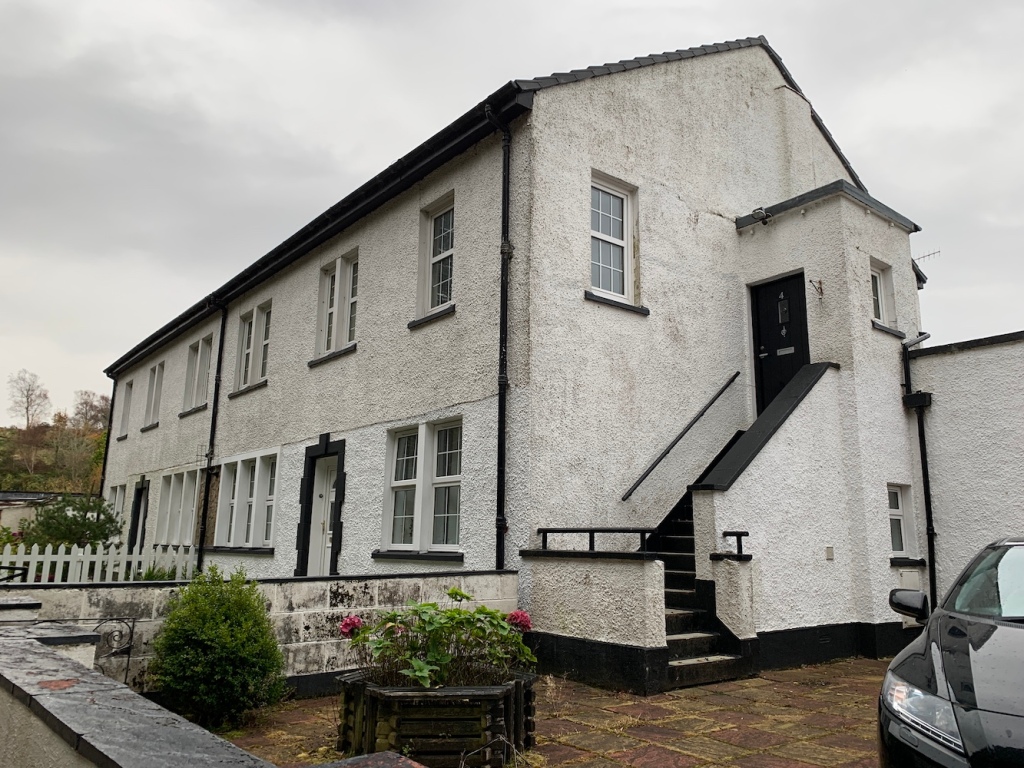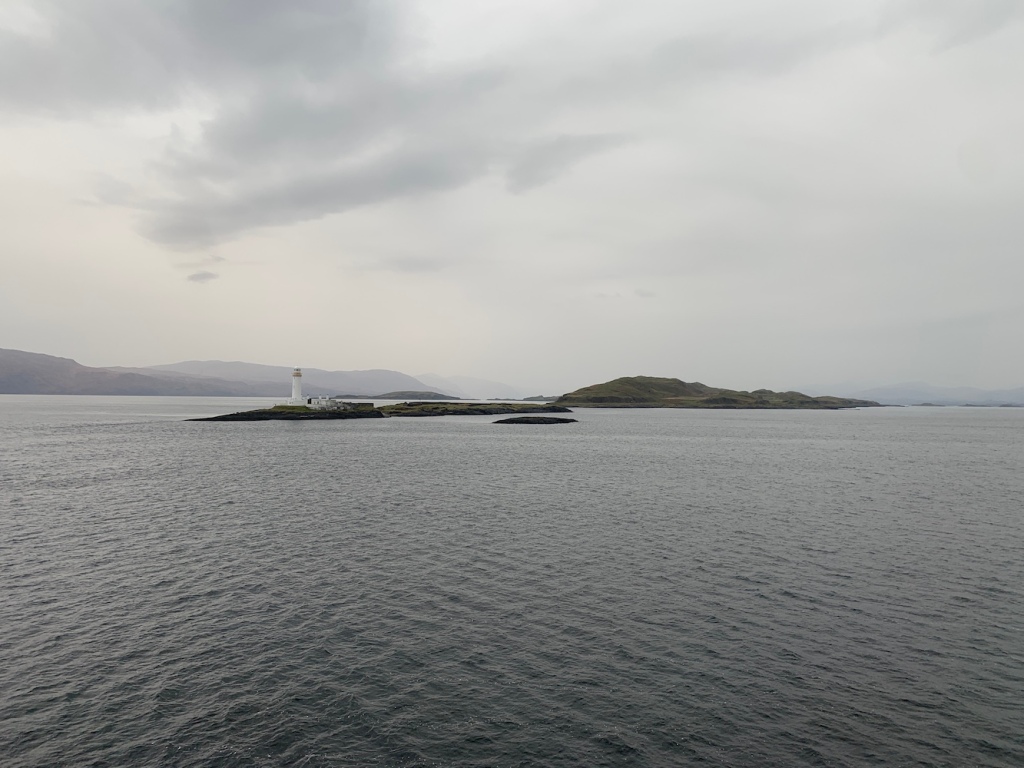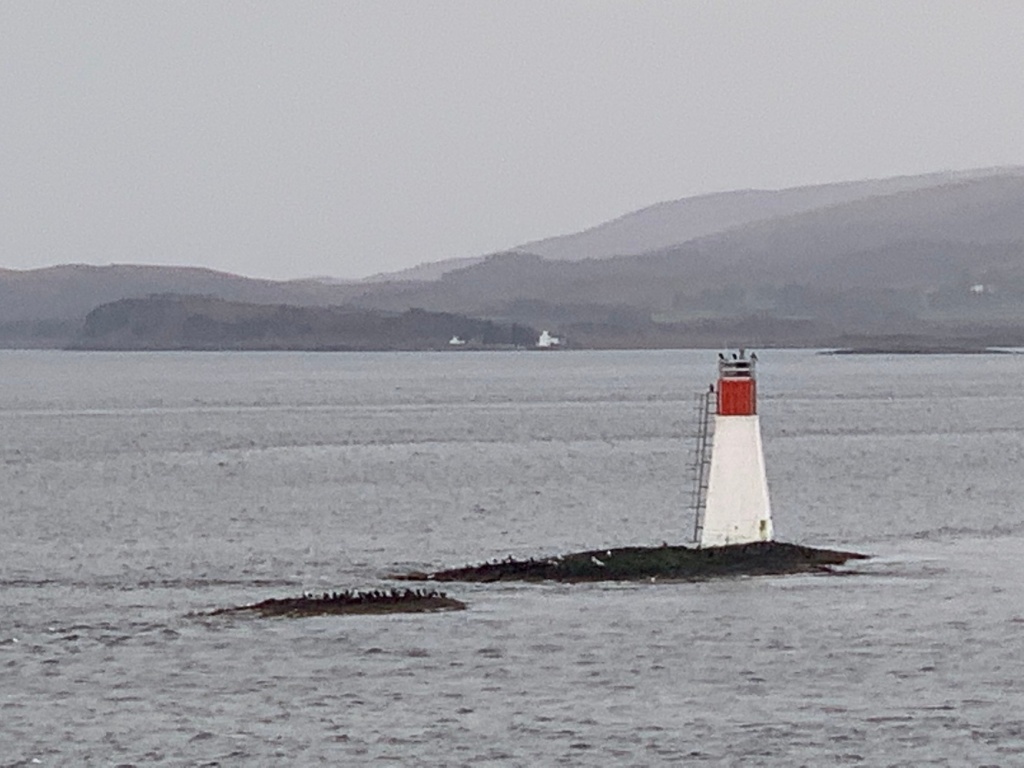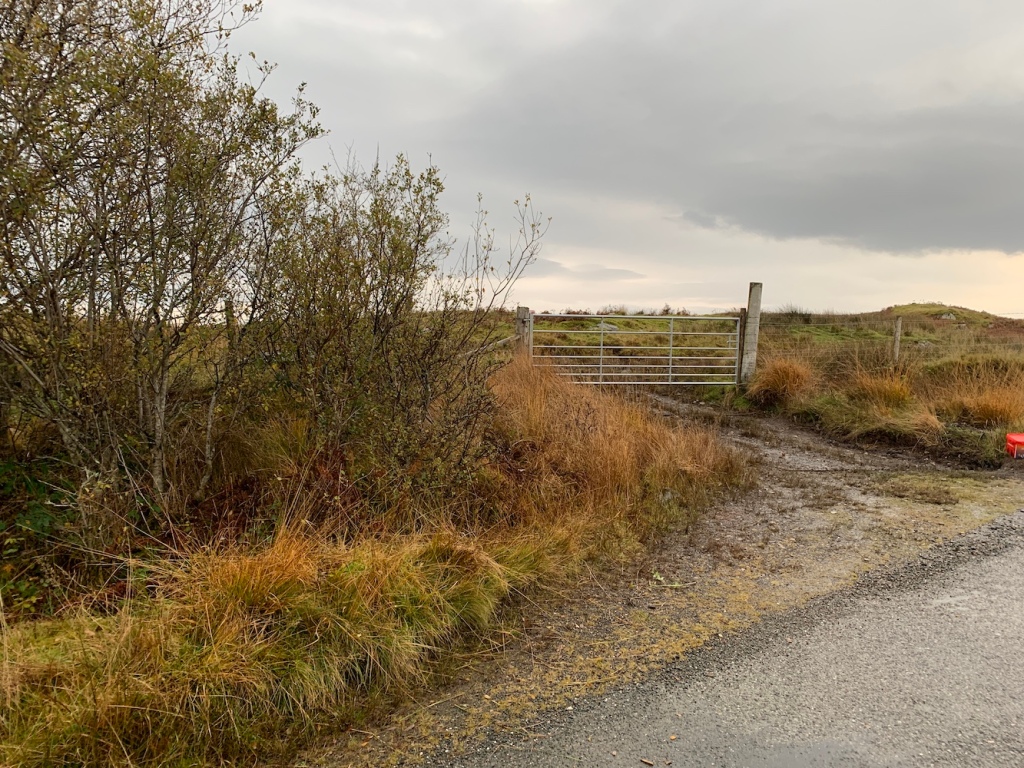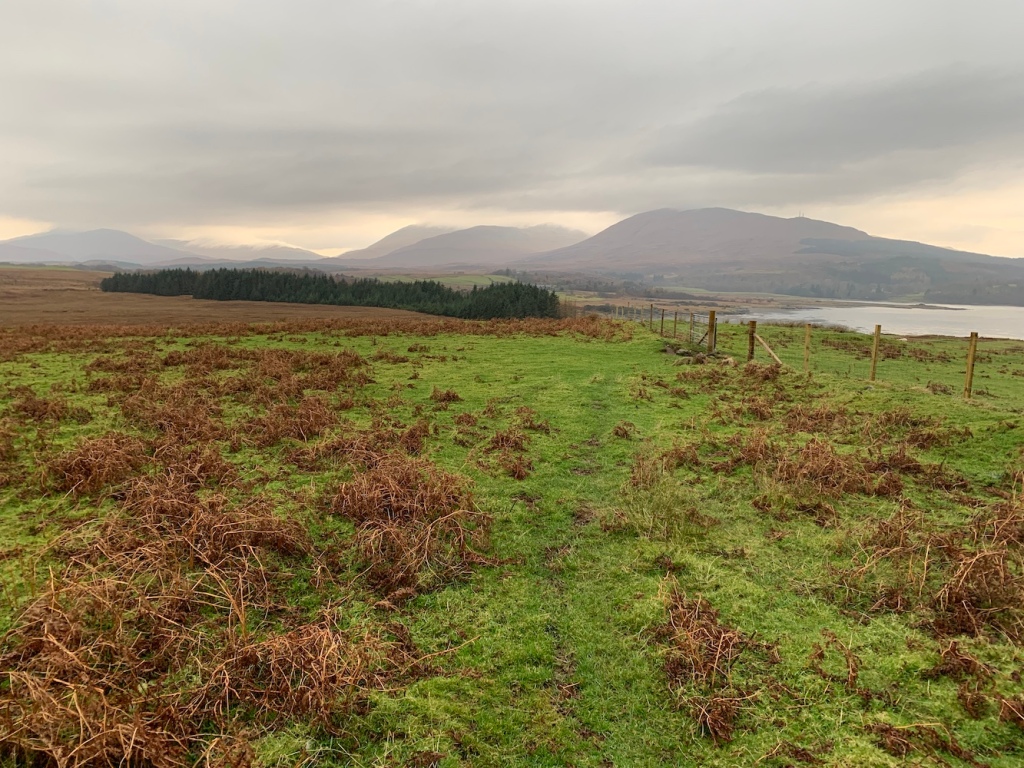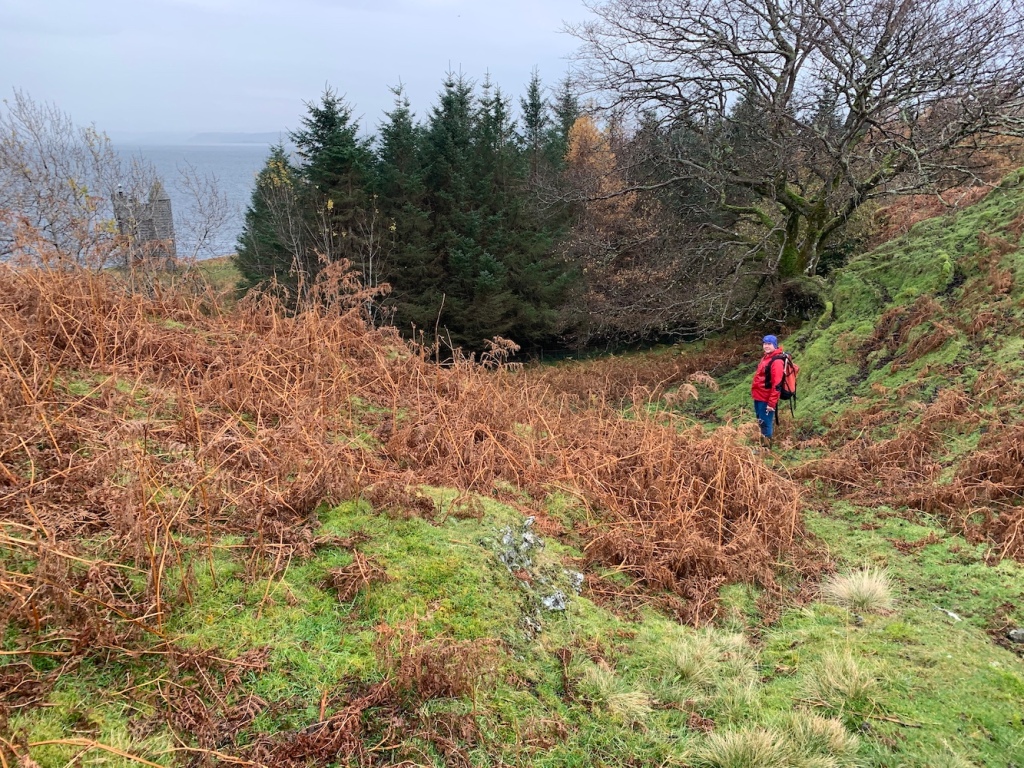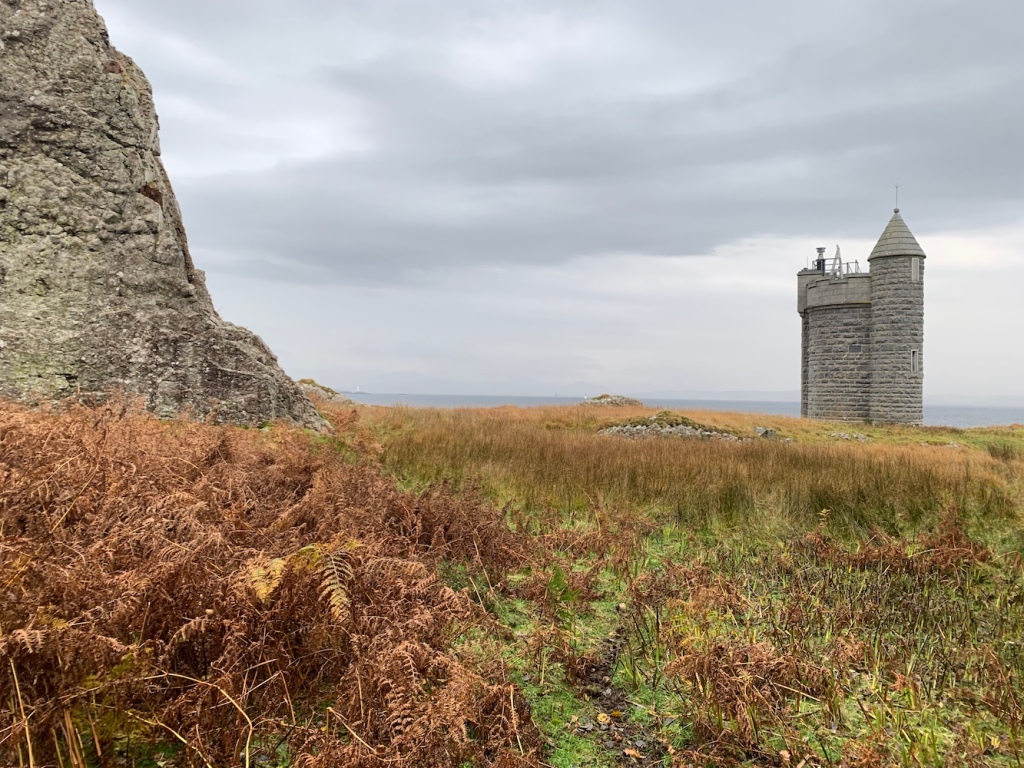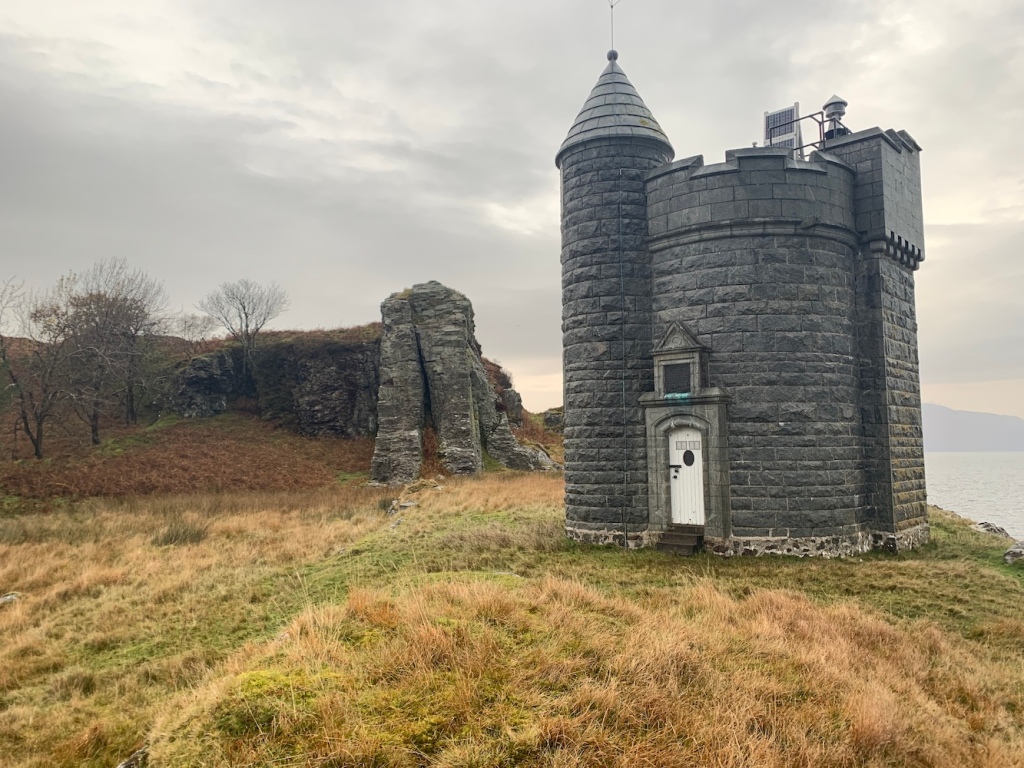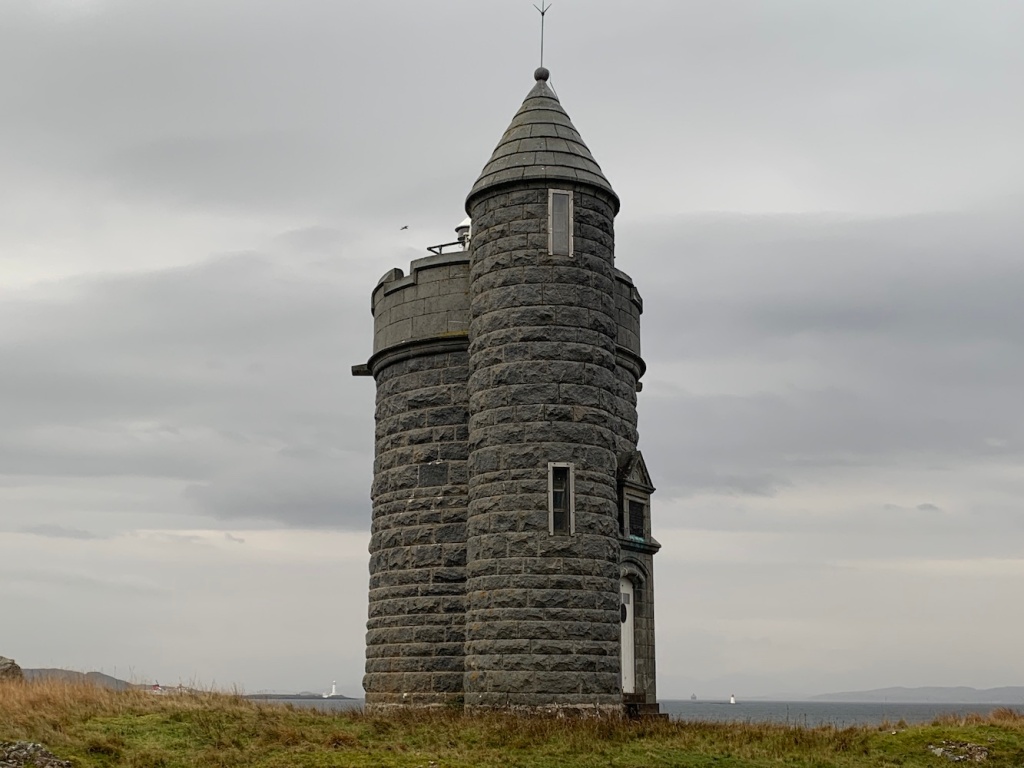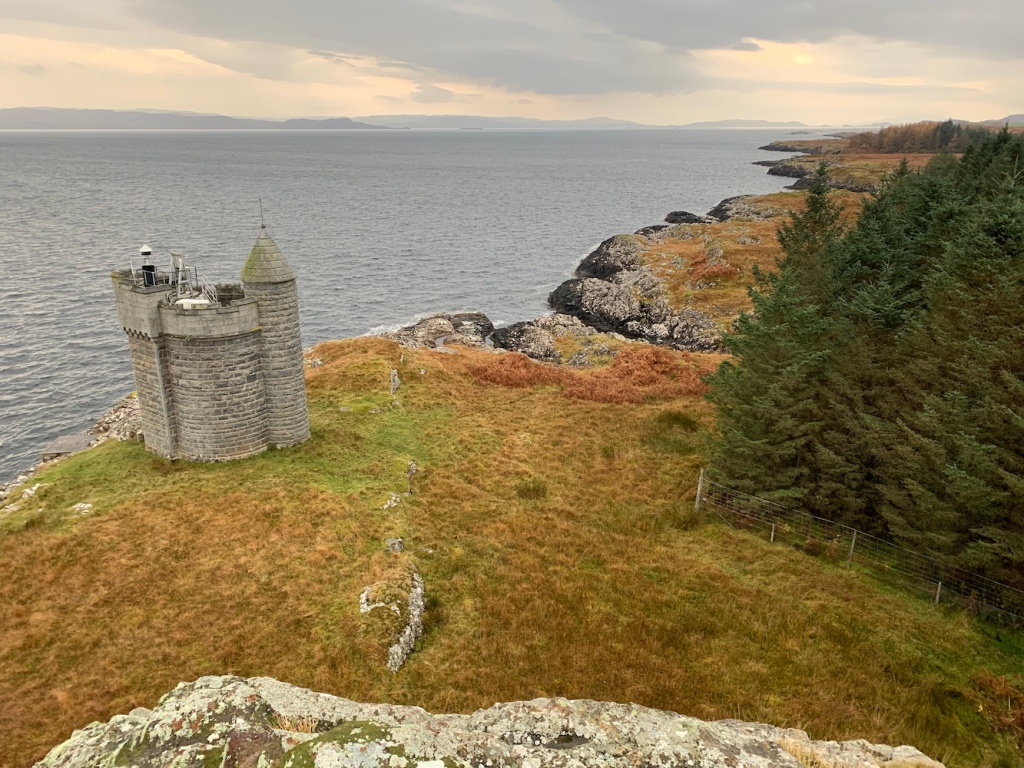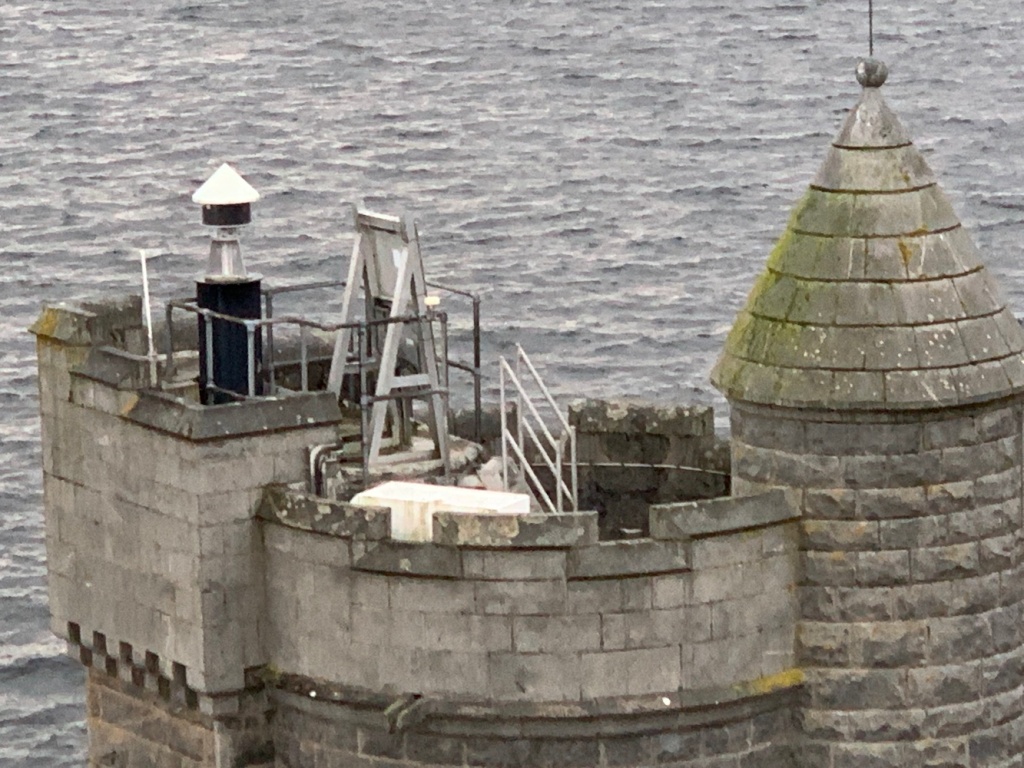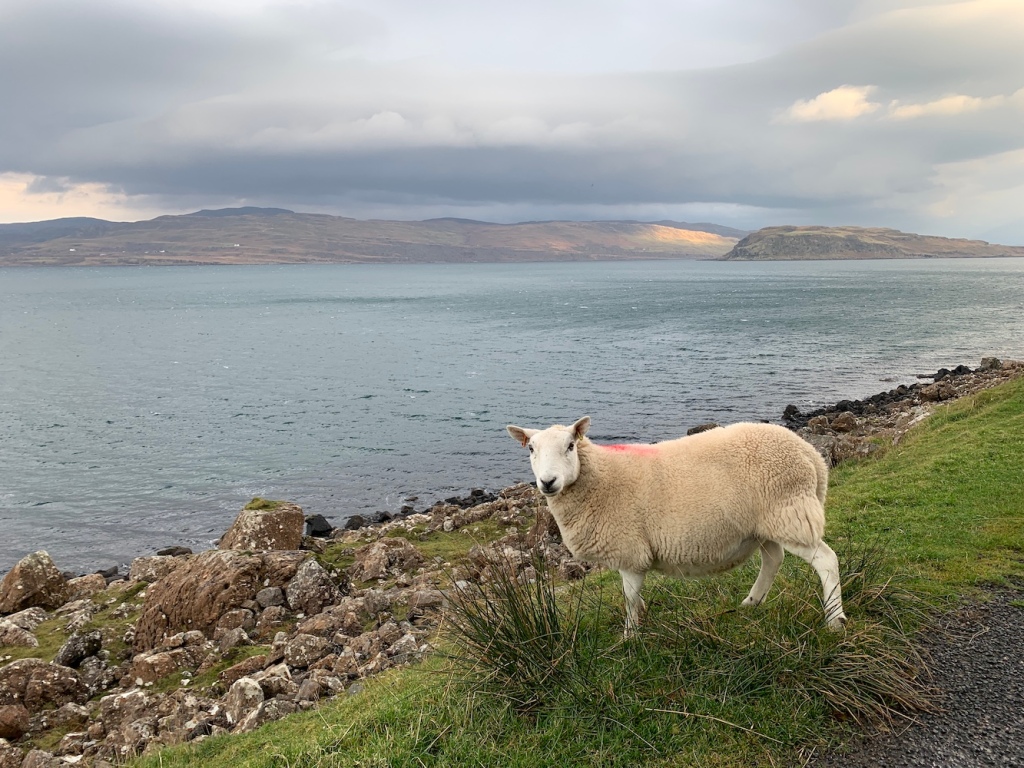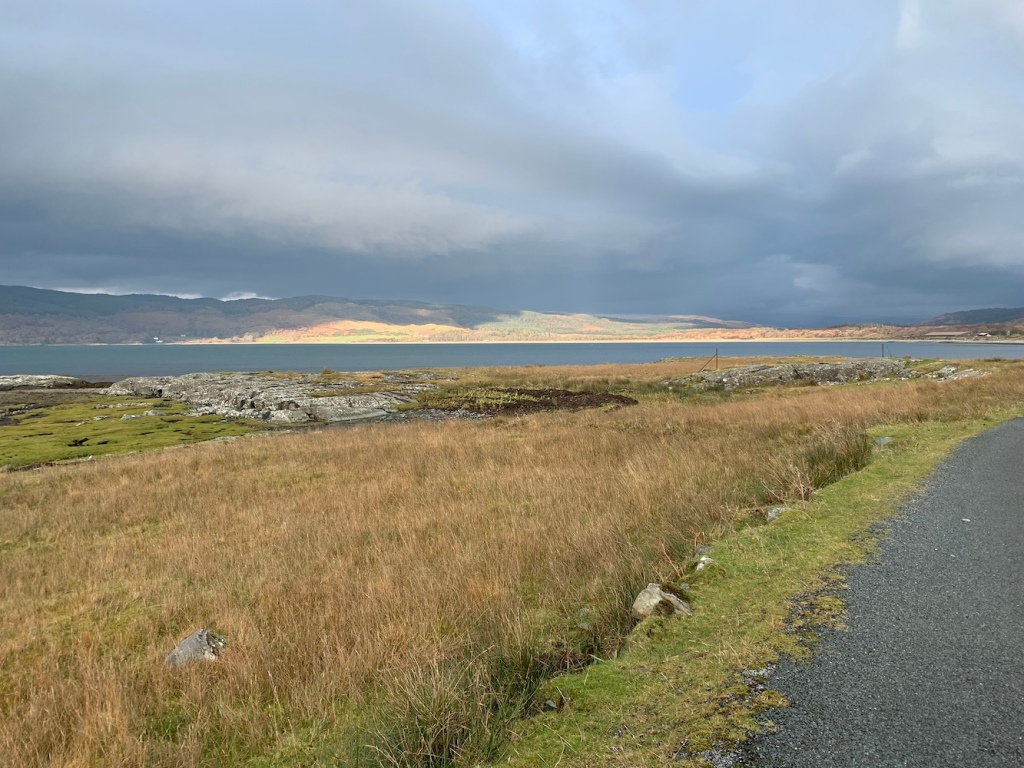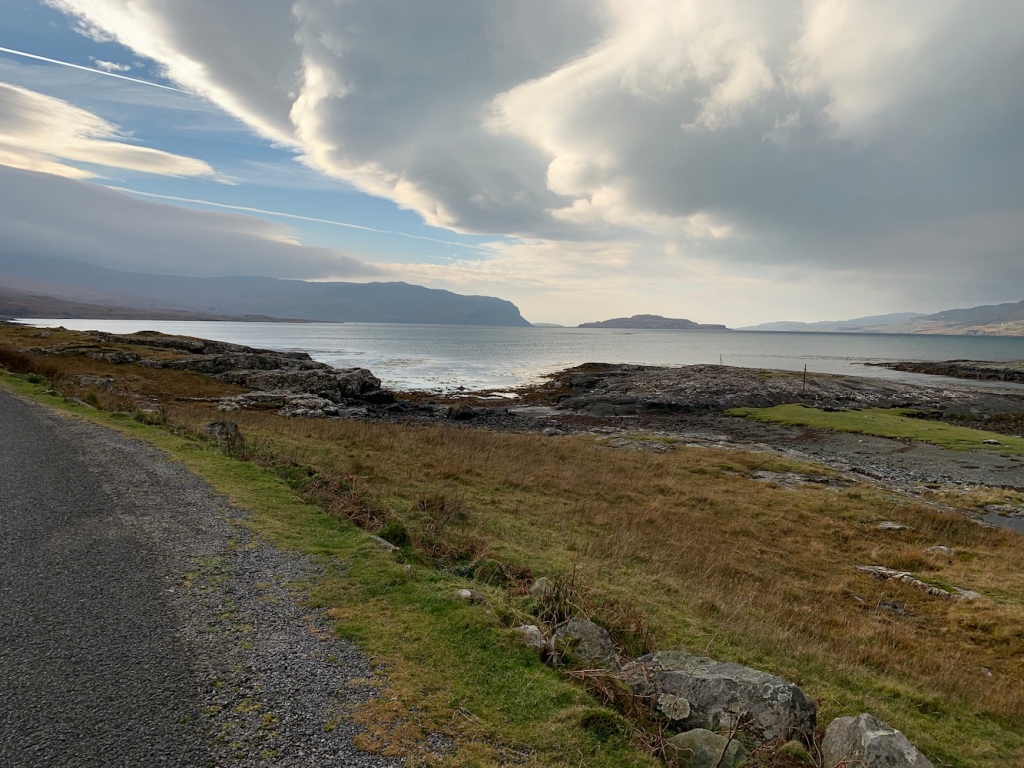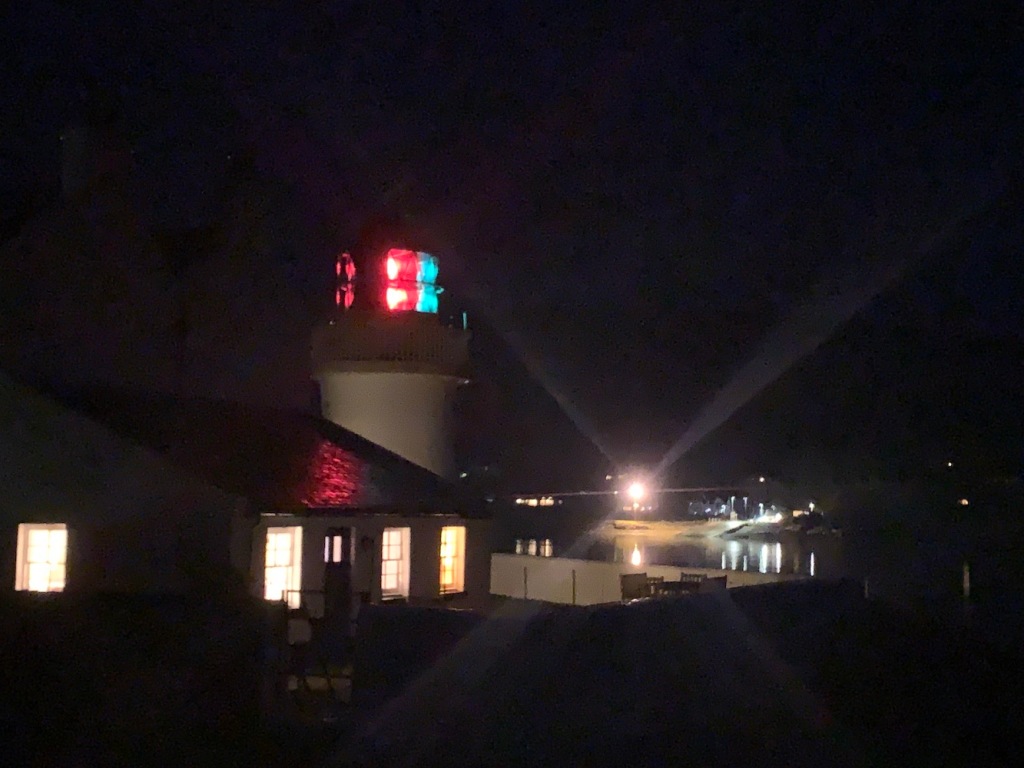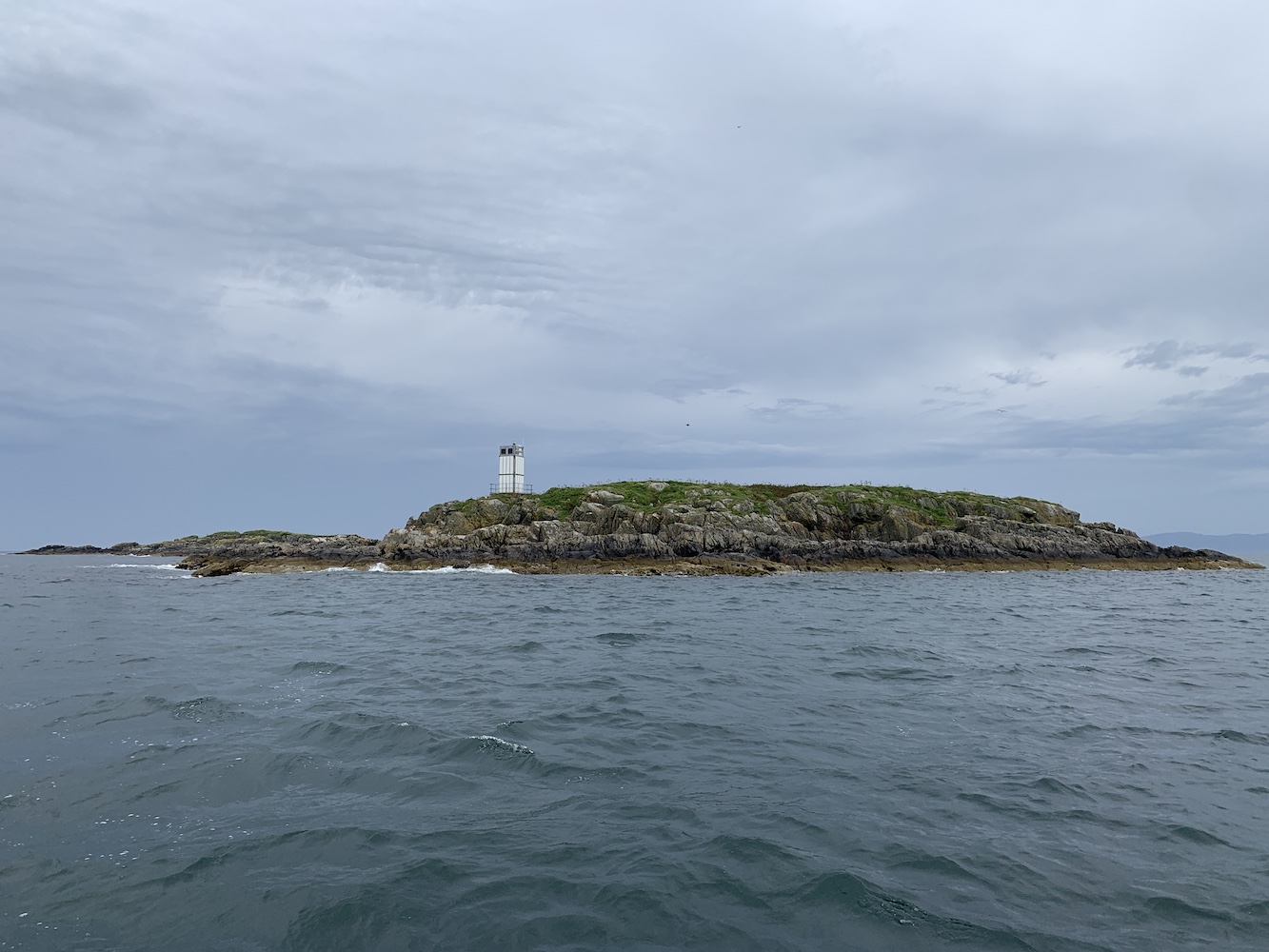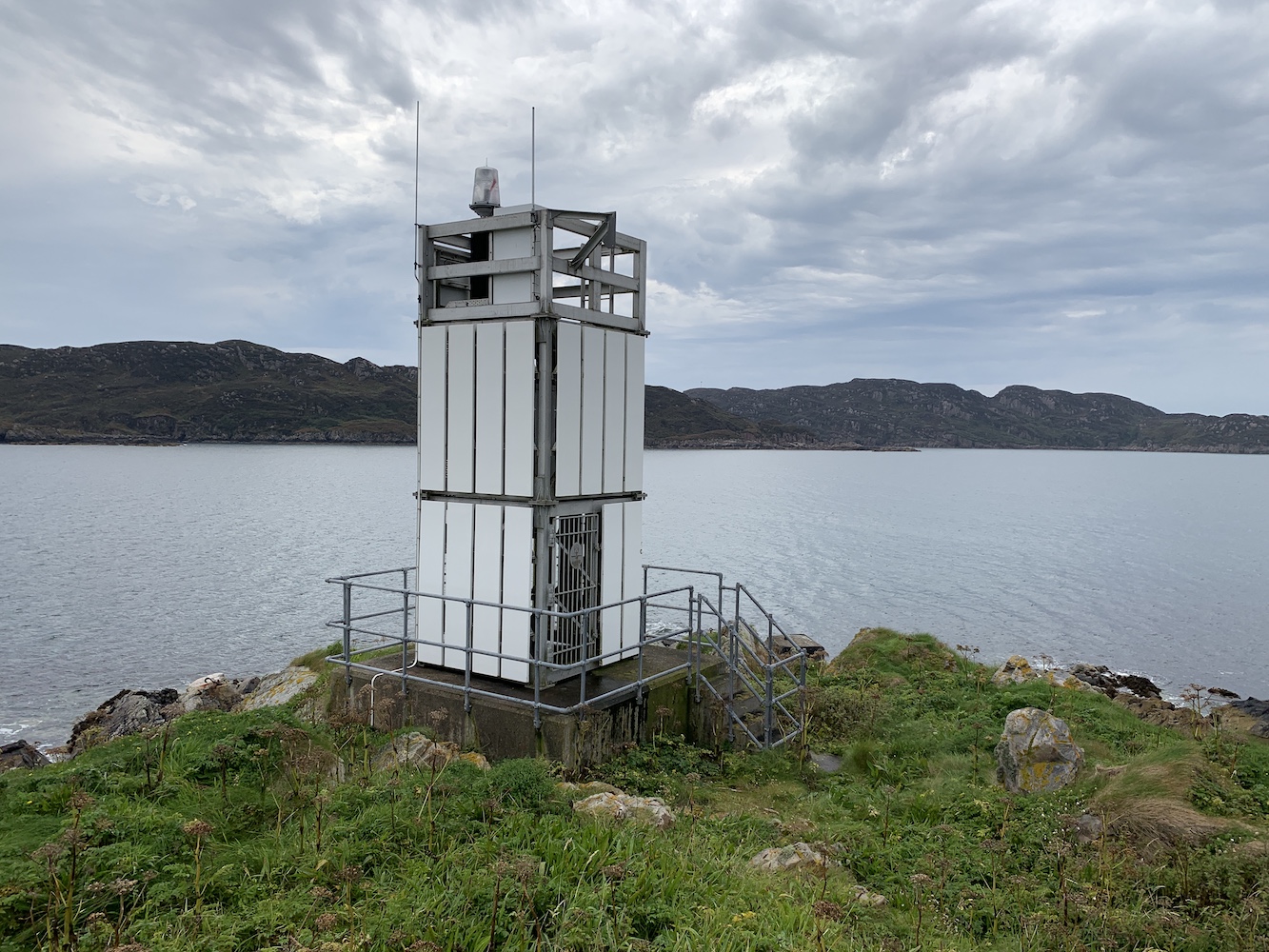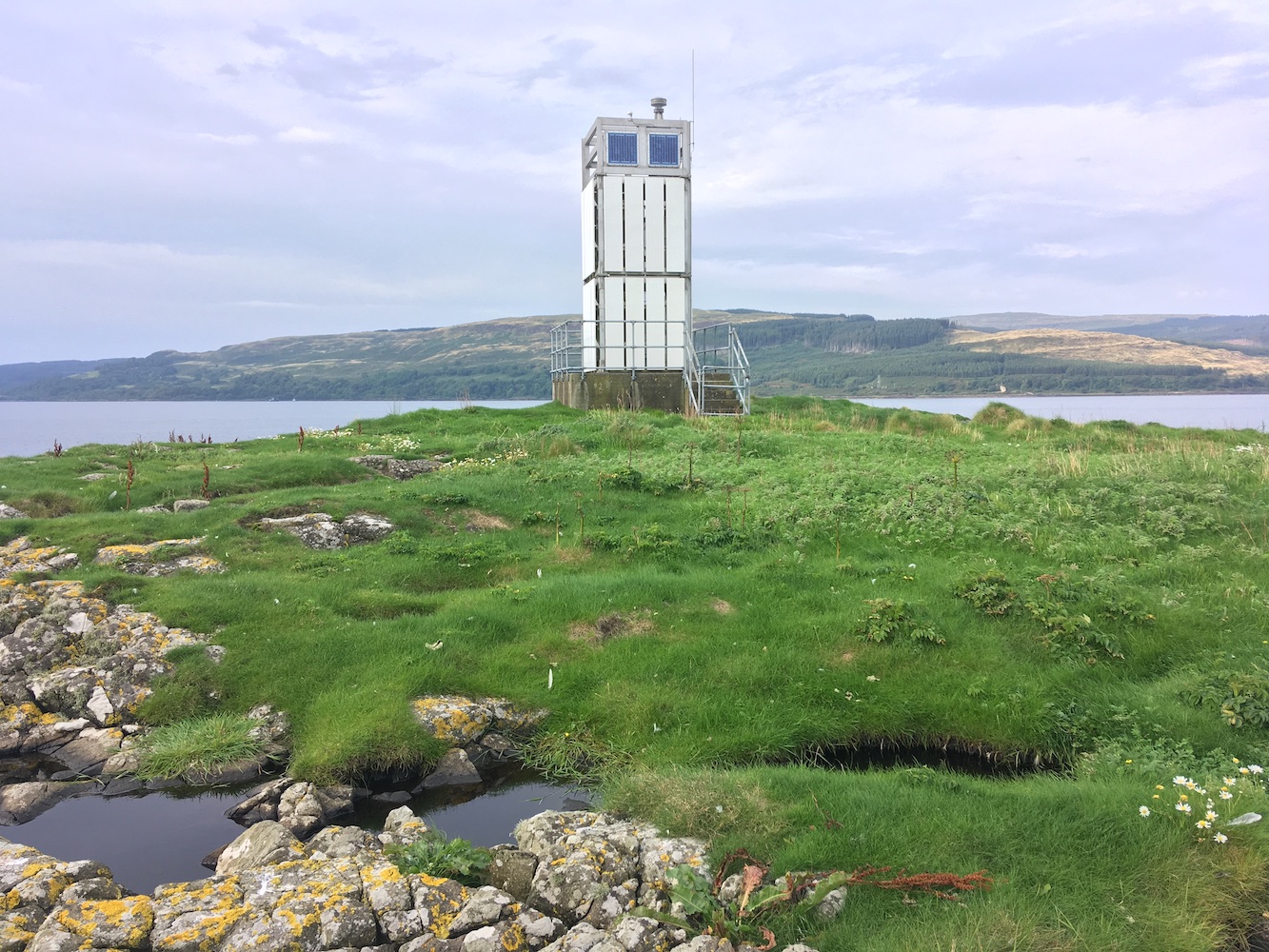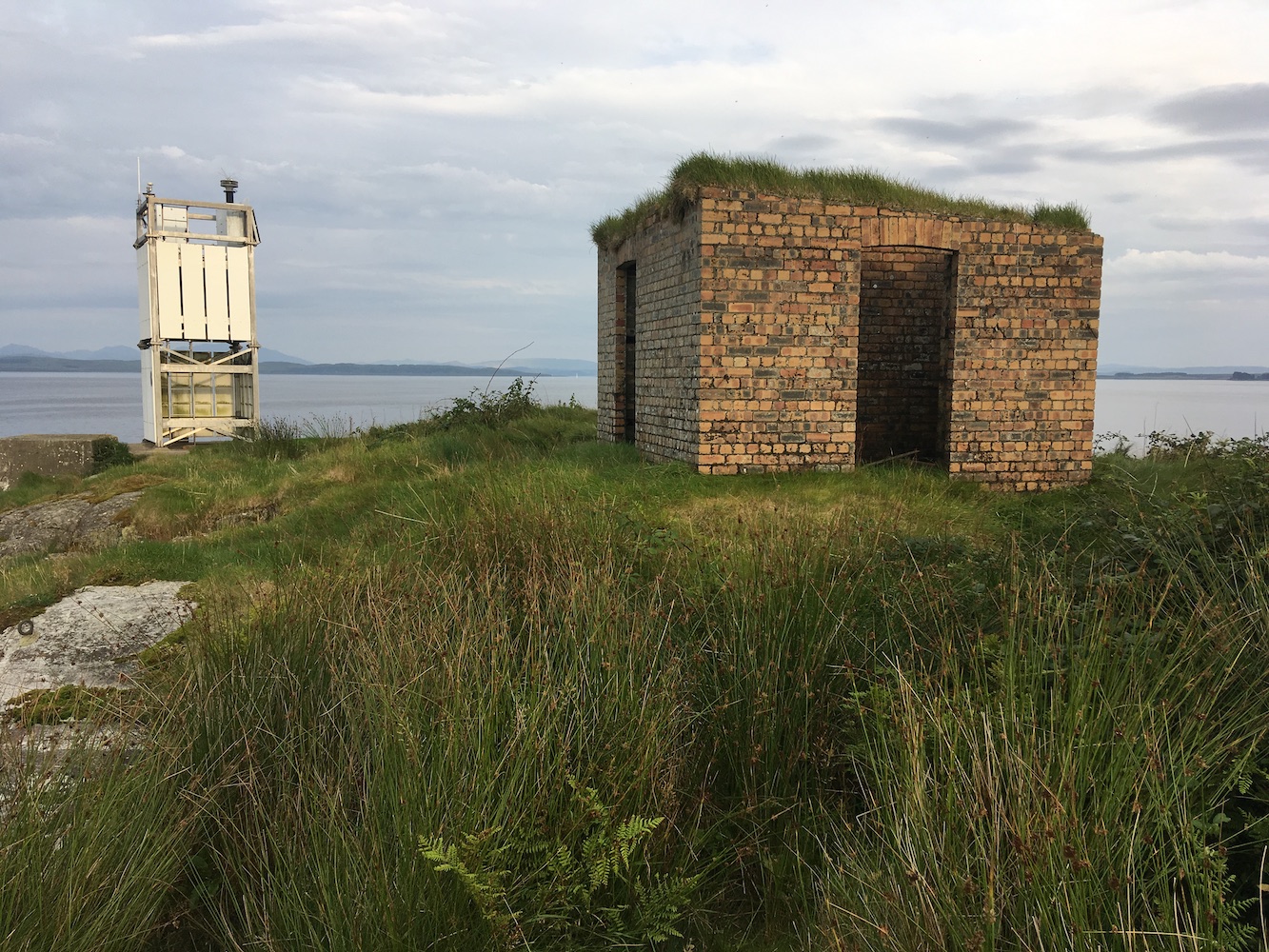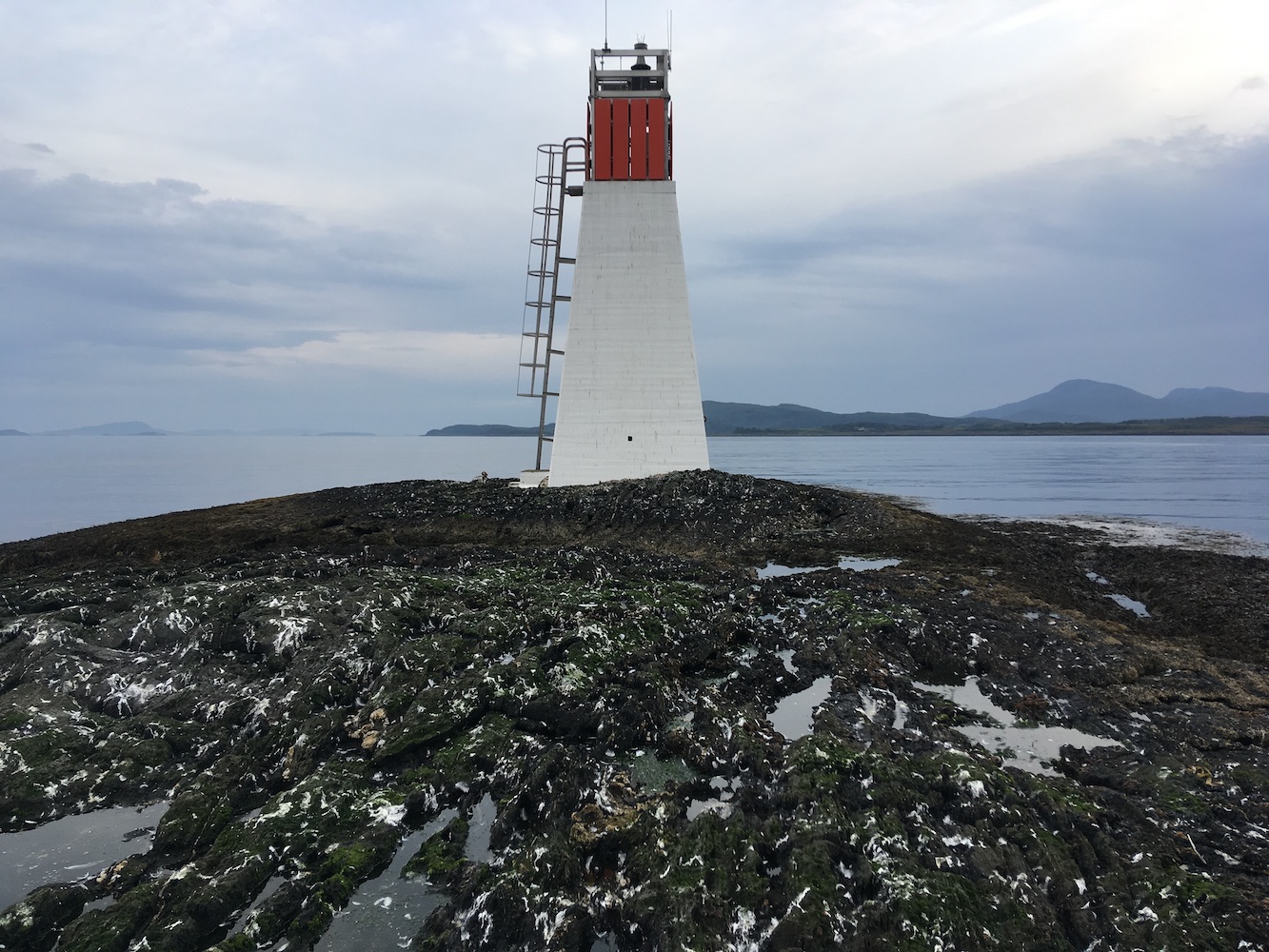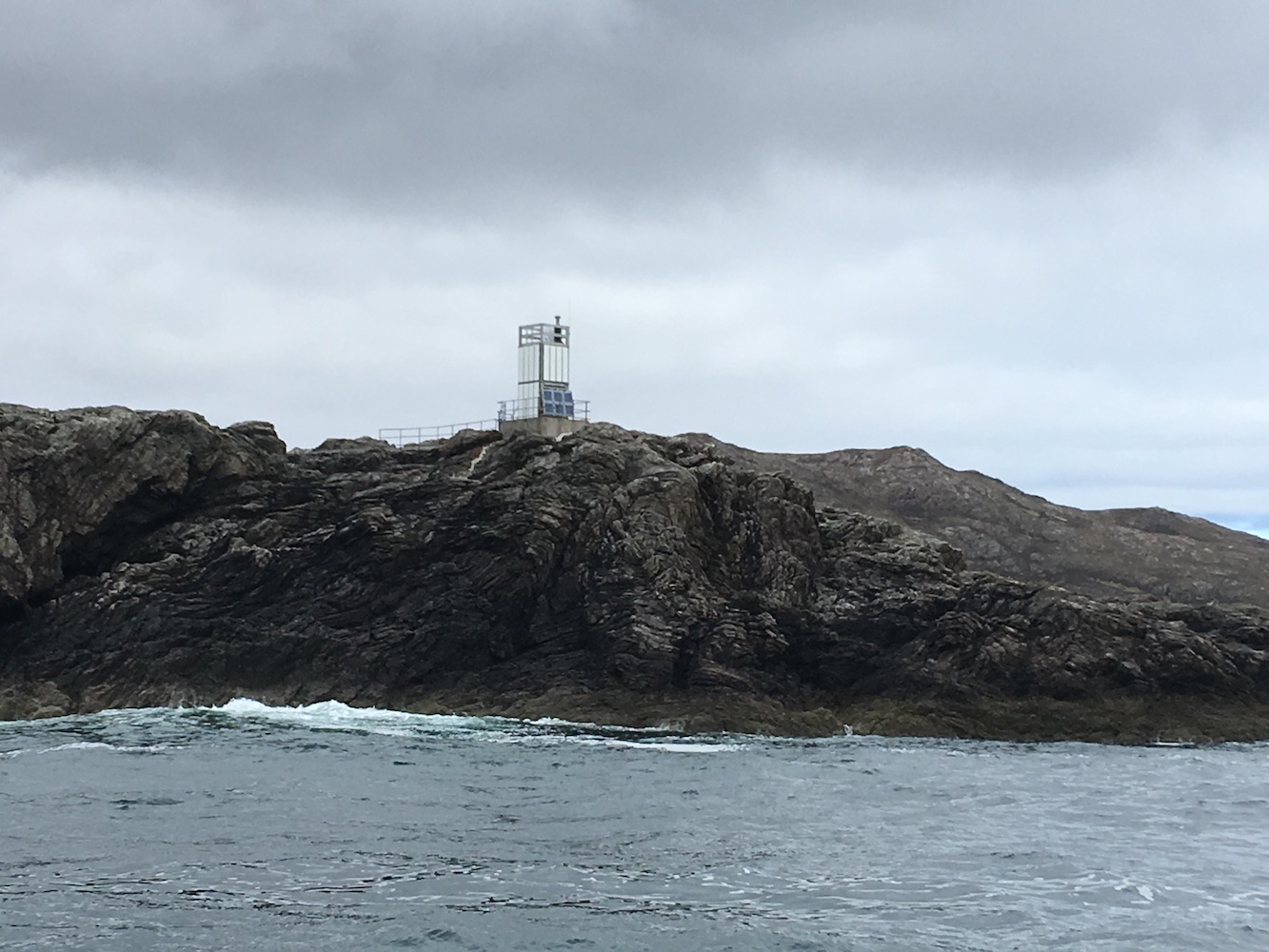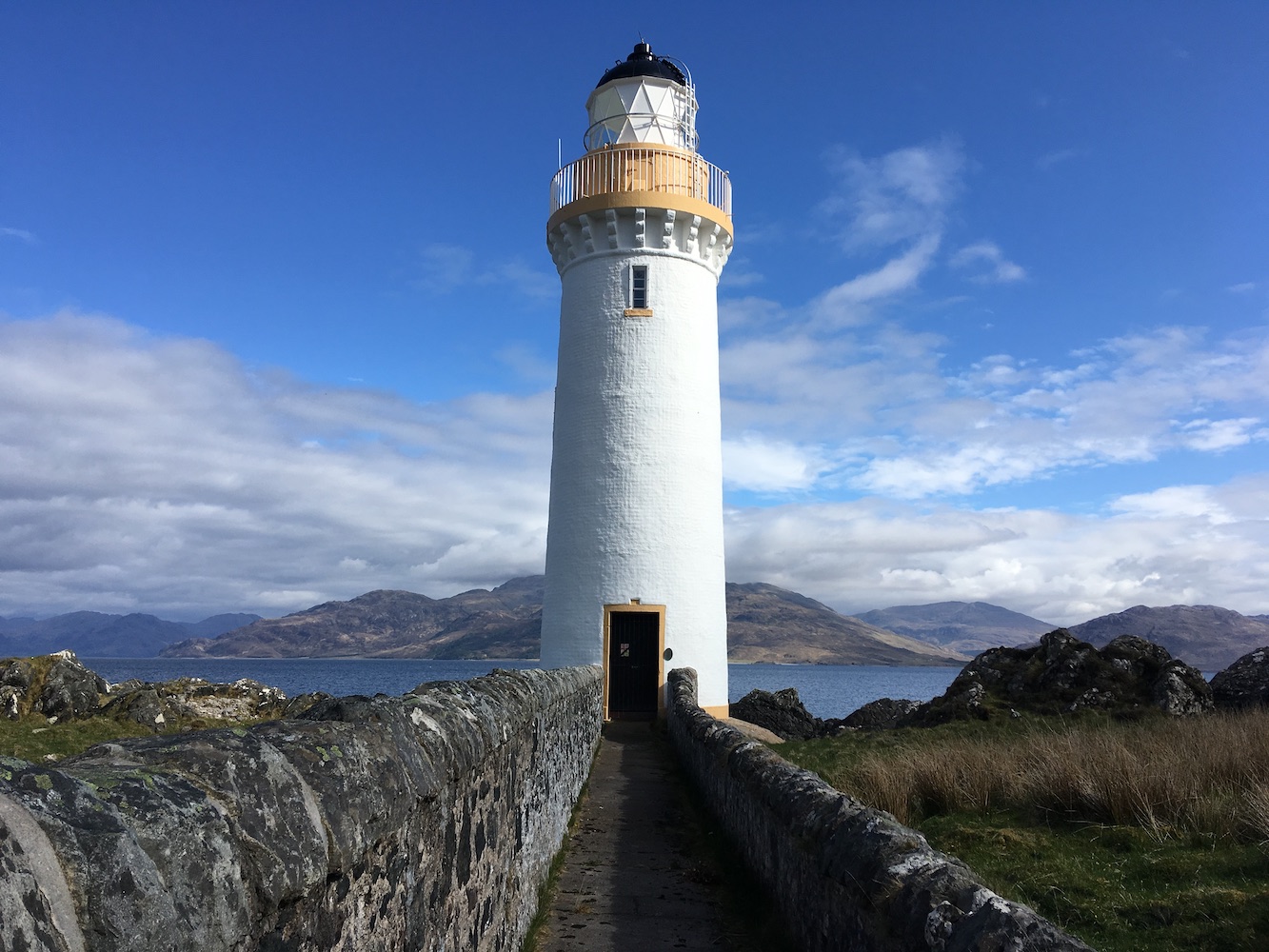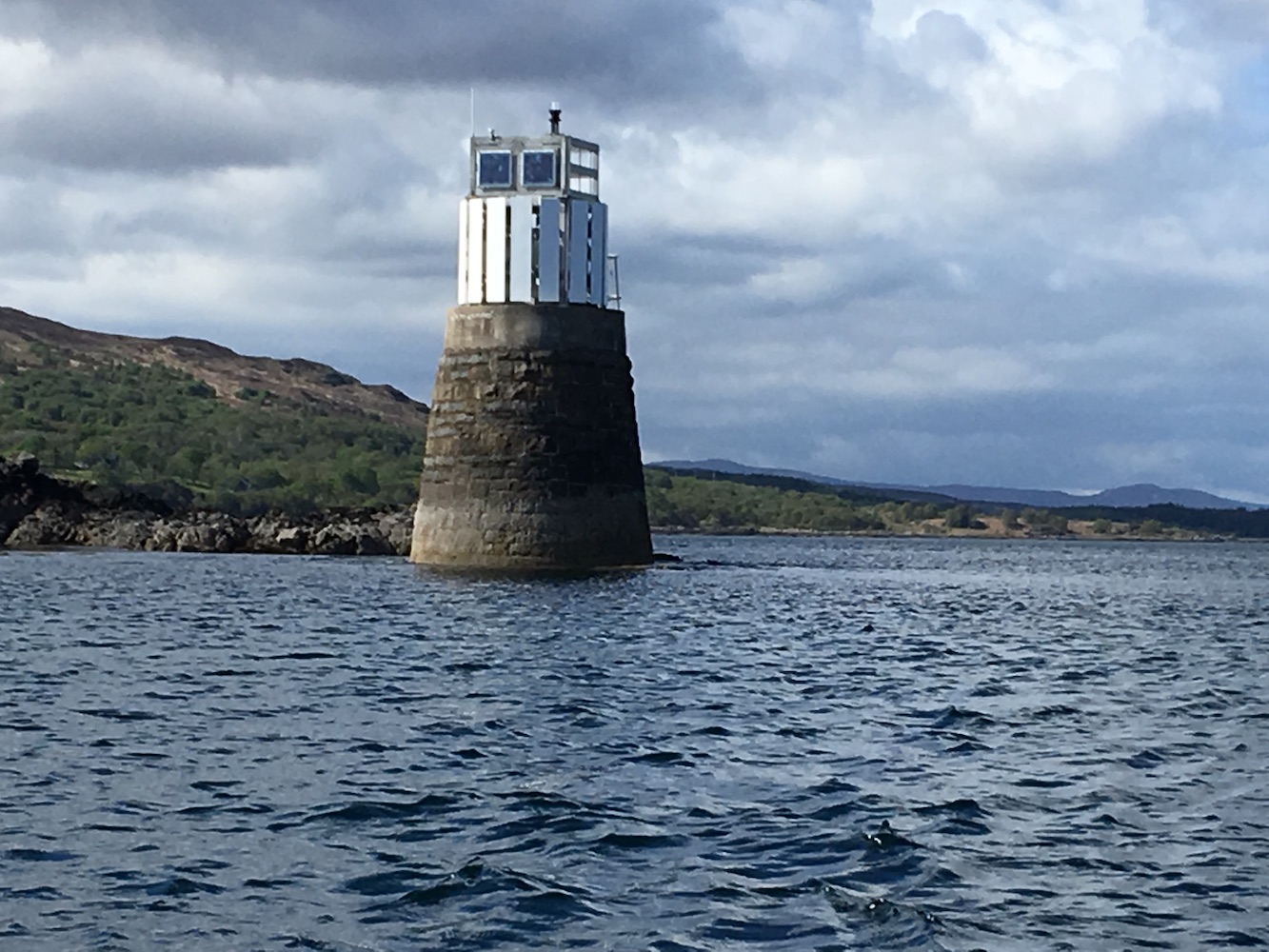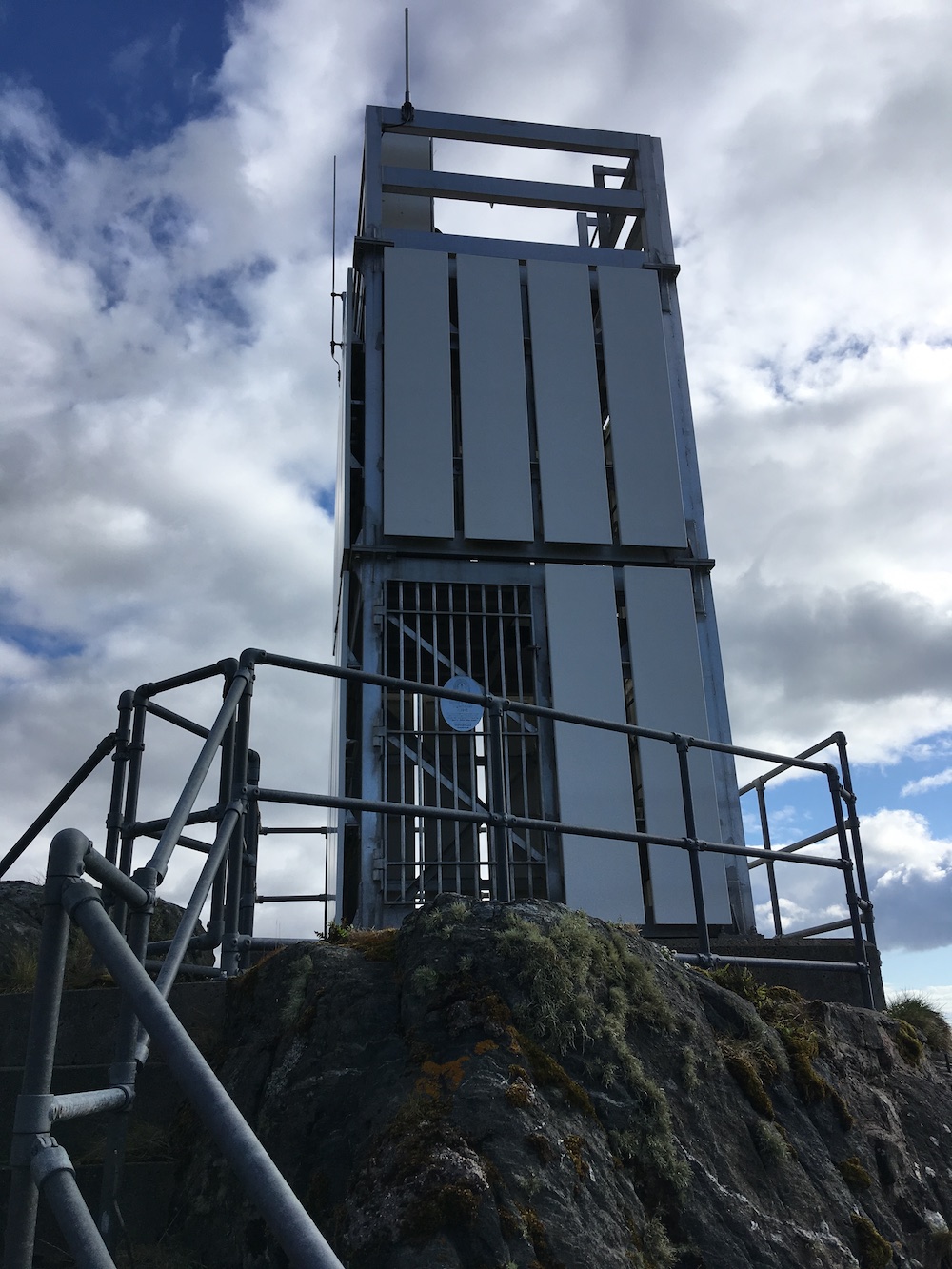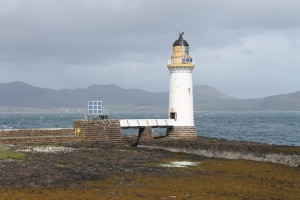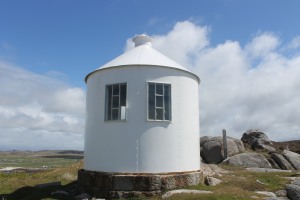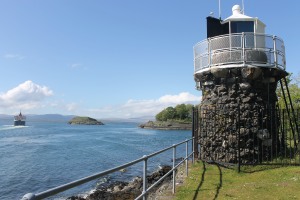Contrary to what the title of this post suggests, we actually started yesterday in Oban with a short visit to Dunollie lighthouse. This little lighthouse, made up of a stone tower and lantern with gallery placed on top of it, is quite understated and that’s one of the things I like about it. I also like the fact that it’s still standing as actually, close up, it looks like it’s just made of a big pile of rocks – the sort of thing my 6-year-old might make, just on a larger scale. But standing it is and it has been for over 100 years.
Joe the Drone had a little flight around the area.
Meanwhile I spent a while at the nearby War Memorial to mark an early 2-minute silence for Remembrance Sunday.
We had a little time before we had to be at the ferry and I mentioned the old Northern Lighthouse Board houses on Pulpit Hill so we took a drive up to find them. I took a guess at which they were and the series of 5 large buildings with four front doors each seemed most likely. This has since been confirmed by my former keeper friend Ian. He actually stayed in one of them while off duty during his time serving on Skerryvore.
The houses were built to house the families of those keepers (and the keepers themselves when off duty) while they were based at some of the major rock stations off the west coast.
After taking a look at the buildings I contacted Ian again as I wasn’t sure how it had worked with the families. I knew the families of the keepers on Skerryvore, Dubh Artach, Barra Head and Hyskeir lived there, but I wasn’t sure if there were any others. Ian explained that initially each block was for each lighthouse, so Dubh Artach, Skerryvore, Ushenish, Barra Head and Lismore. The families of the Hyskeir keepers stayed in a separate house (Glenmore House) which is still on the other side of Pulpit Hill.
It changed when Lismore was automated in 1965 though and the Hyskeir families moved to the blocks. He added though that, as time passed and more of the lights were automated, the blocks began to house families and keepers from other lighthouses. Ian himself stayed in one of them while off duty from Pladda, for example. It was good to see these buildings and Ian has said before that it was quite a community up there with, I imagine, anything up to 20 families there at any one time.
It was time to hop on the ferry to Mull, which was thankfully very quiet. The sailing to Mull (or in fact a lot of sailings out of Oban) are always enjoyable as you pass a number of lights including Dunollie followed by Lismore and Lady Rock. It was good to see Lismore with the main island in the background thinking “I was there yesterday” and then looking over to Lady Rock thinking “I landed there last year”!
Almost immediately Duart Point was next to us and to this one I thought “I’ll be there shortly – hopefully”. We weren’t sure how easy it would be to get to as we knew there was a big craggy Rock behind it and it wasn’t clear how easily we would get around that. There was only one way to find out.
We headed straight for Duart Castle, which is currently closed, but the car park is a good starting point for the walk to the Point. Bob had managed to find some directions on his GPS device for reaching a geocache very close to the lighthouse and this was a great help. I will try to include them as best I can here for anyone wanting to walk out to it.
Walking back along the road we found the gate on the left just after a row of trees. Once through the gate (remembering to leave it as we found it, of course) I spotted another gate on the skyline at the top of the field as the instructions suggested.
Passing through that gate we turned left immediately and followed the fence and wall along. There are rough paths through the vegetation and I would actually recommend this time of year to visit if you can as the ferns have all died back exposing the grassy paths. I imagine they would be harder to see in Spring/Summer.

Where the wall ends the landscape opens up and we headed “straight on to the left” as Bob calls it (which basically means somewhere between straight on and left!) This route zigzags as you go downhill and once you are on a flatter section you have two options, you can either stay up high and view the tower from above first or continue around and down to the right. The tower is tucked away just to the left of the trees at the coast. As you go down you should then spot the tower as you follow the grassy track down.
It was raining today so it was quite wet underfoot and a lot of the ground was covered in leaves, understandable as Autumn draws to a close. It was great to spot the tower through the threes and craggy rocks though. It’s a beautiful tower, originally built as a memorial of the Scottish author William Black who died in 1898 and always enjoyed Duart Point. The cost of the tower was partially covered by Black’s family and friends and there is a lovely plaque above the door explaining this.
The only real indications of this being a lighthouse are the Northern Lighthouse Board plaque on the door and the modern little light and solar panel on top of the tower. There is a little platform nearby that looked like it may once have accommodated some sort of derrick.
The tower has enough variety in its shape to make pictures from every angle look quite different. My favourite view was of the lighthouse in the foreground with the big rock behind it.
Another great angle was from the fence around the trees. This angle gave you a view of the Duart Point tower with Lismore to its left and Lady Rock to its right. It’s not often you get that kind of view.
Joe the Drone had come along and, although it was slightly wet, Bob thought he’d give him a fly anyway and he got a few great shots.
Following the path back up we then wandered along to the top of the craggy rock to look down on the tower. This is an excellent angle on it, particularly if you want to get a better view of the lighting equipment. The viewpoint allowed us to get some Joe-type images without needing to use Joe. I would highly recommend including a stop here in your walk if you go (just be careful near the edge).
Annoyingly the weather started to clear up as we walked back, but we’d still enjoyed the visit to the light and the nice walk to get to it.
With no ferry leaving the island until after 4pm we had a few hours to kill. Unfortunately we didn’t have long enough for Bob to do a hill or for the walk out to Rubha nan Gall so we went for a drive. Mull seemed very unfamiliar to me, particularly the southern part, and it’s no surprise really as I worked out I’d only been once before (if you exclude the quick stop off at Ardmore Point from a chartered boat last year). It was beautiful to see it though, especially with the clearing skies and the sun eventually deciding to make an appearance.
After a fair wait at the terminal at Fishnish we boarded the ferry for the short crossing to Lochaline. By this point it was beginning to get dark and so I enjoyed the outline of the landscape as Bob drove us along to Corran. I always find Corran lighthouse just seems to suddenly appear when you aren’t expecting it and that was exactly what happened yesterday evening as we arrived suddenly at the Corran ferry at Ardgour. The joy of seeing lighthouses at night is, of course, seeing them in action. Corran is a good one as it has the red and green sectors which make for a more colourful view. This was another one I could look at and think “I was at the top of that tower last year”.
Across the water I could also see the little Corran Narrows light flashing away and I remembered the unnecessarily tricky walk down to that one!
After crossing the channel on the Corran ferry we began the journey northwards and home. It had been great to get another weekend away this year, while we could. Who knows what the coming weeks and months will bring. Stay safe everyone and, if I don’t manage another post then have a restful Christmas time. Let’s hope 2021 can be an improvement upon this year. 🙂

